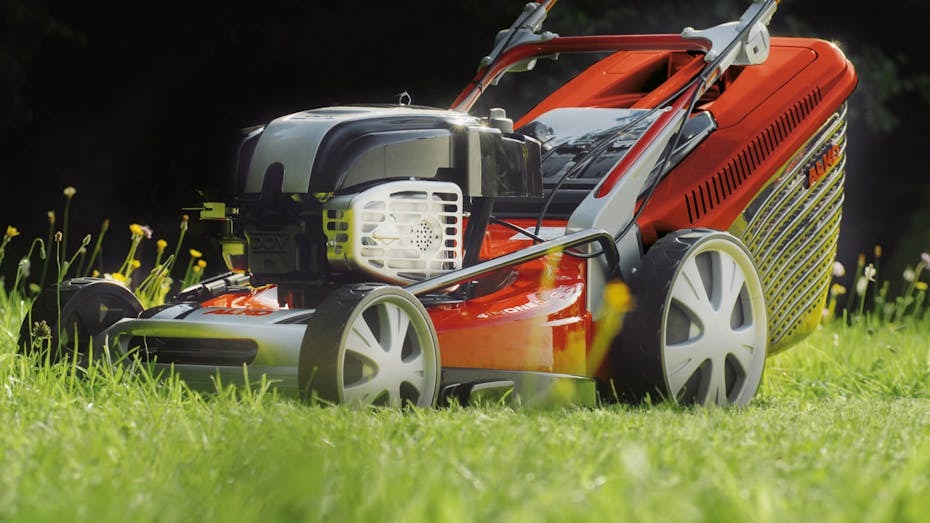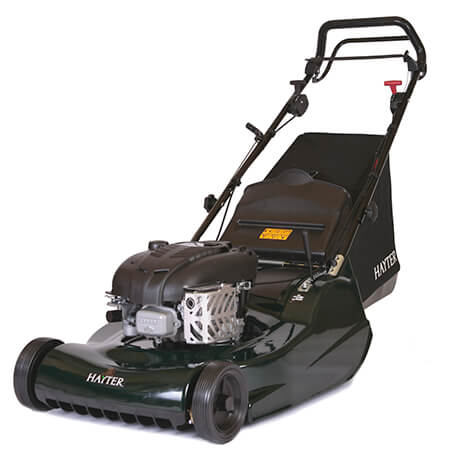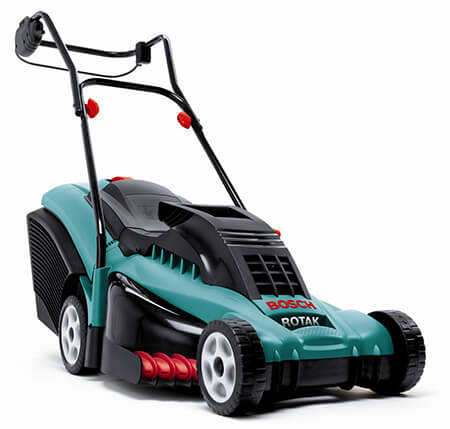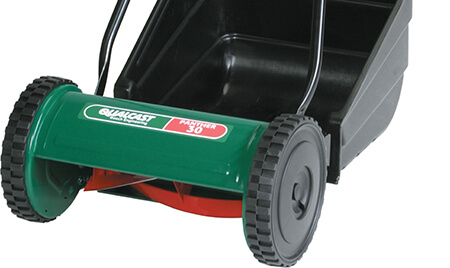
Lawn Mower Power
The amount of power a lawn mower has is important because it influences the quality of cut.
Low powered pedestrian lawnmowers in long or damp grass may struggle. The extra resistance causes the blade to rotate more slowly which in turn means the grass is not cut cleanly and may even be ‘chewed’. You can recognise this as either a ribbed effect in the grass, a silver sheen or straggly straw coloured grass blades all over the lawn. Therefore a quality power source is essential.
Petrol Lawn Mowers

Naturally, a petrol lawn mower produces the most power and should be considered for lawns over 200 metres square or where mowing the lawn may be difficult due to slopes or uneven surfaces. Don’t skimp on power as it is one of the most important factors for a good cut and easier grass mowing.
If the petrol lawnmower has driven wheels saving you pushing effort then even more power is needed. How much power is good? Well the ideal range with ample power for rotaries is 4bhp to about 5.5bhp depending on how wide the lawn mower is. Cylinder lawn mowers can manage on a little less starting from 3bhp.
The wider lawnmowers do more work so need more power. Today there are many lawn mower manufacturers to choose from but often the engine is manufactured separately. Therefore, some Honda lawn mowers may just have a Honda engine. Nothing wrong in that and very good they are too. I also find Kubota, Kawasaki, Tecumseh, Subaru (Robin) and Briggs & Stratton excellent power plants.
Electric & Battery Lawn Mowers

Power is equally important for an electric lawn mower or even a battery lawn mower for that matter. For areas over 300 to 400 square meters I would suggest a petrol mower unless there was some other overriding reason to have an electric lawnmower; weight for example. But as many many lawns come in under 300 square meters an electric mower or battery lawnmower can be the best option. Just get the most power in that width of lawnmower; they generally range from 900 watts to about 1500 watts for rotary mowers and upwards of 300 watts for cylinder mowers. With cylinder mowers you will need to mow at least twice a week as an electric cylinder mower will struggle with a whole week of late spring growth.
The advantage of an electric power source is no engine to service; just keep it clean and sharp. There are no polluting exhaust fumes and electric lawn mowers are a lot lighter than petrol lawnmowers. If a cable is likely to snag in your garden or distance is a problem then a battery lawnmower, though slightly heavier may be the solution.
Electric hover mowers with integral grass compartment are very common but unless you have a good reason for having one (sorry I can’t think of one) then DON’T. You need a spanner to adjust the mowing height, they are comparatively poor at collecting clippings and as the box fills up with clippings the extra weight lowers the cut.
In addition, it generally takes twice as long to mow a lawn with an electric hover mower compared to a comparable electric rotary mower. There are petrol and electric non-collecting hover mowers which work well but these are generally for rough areas, slopes or commercial situations.
Manual Lawn Mowers

These are just small cylinder type mowers. If your lawn is not too big, relatively even and you like a good work out then go for it. You’re a better man (or woman) than me!